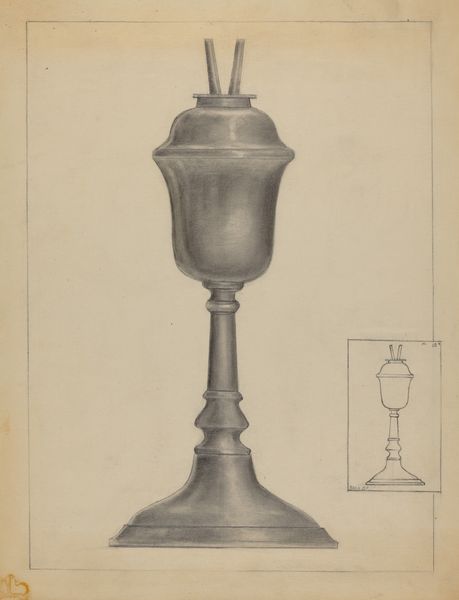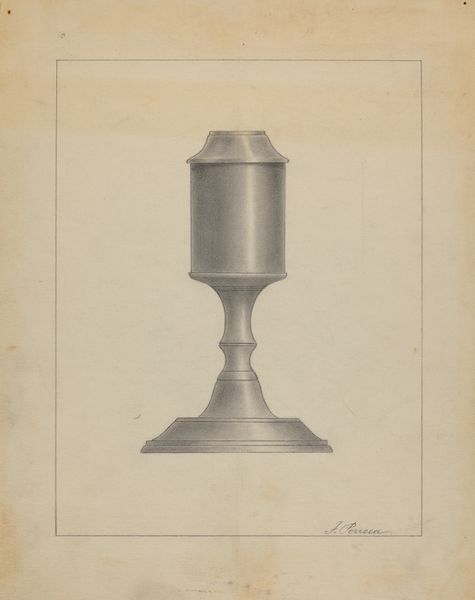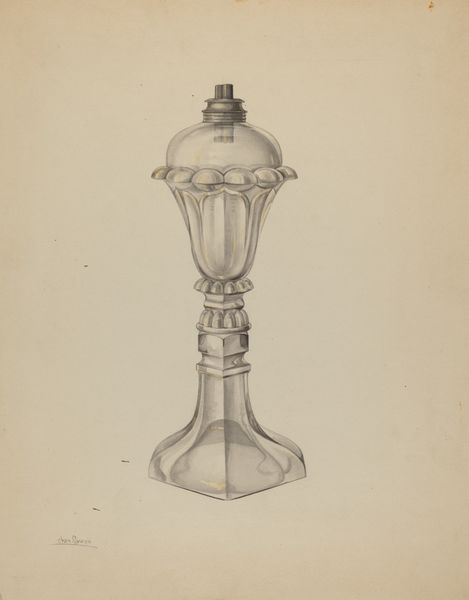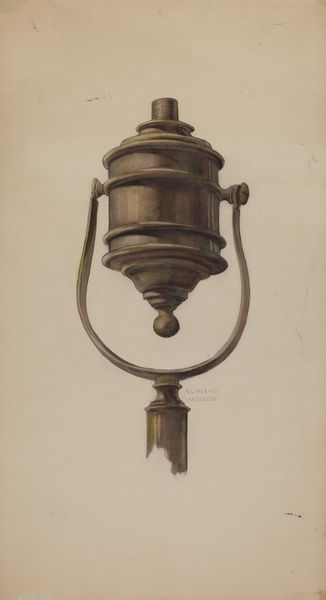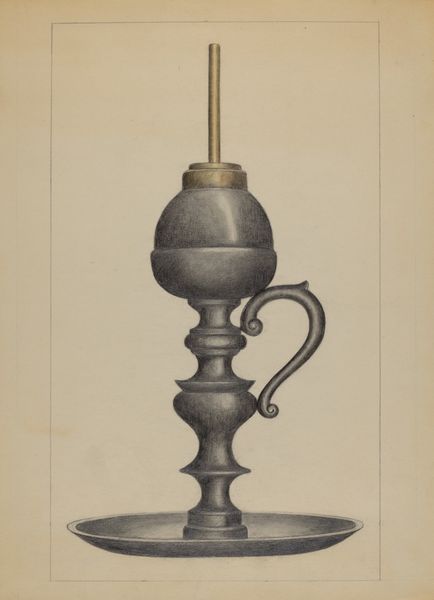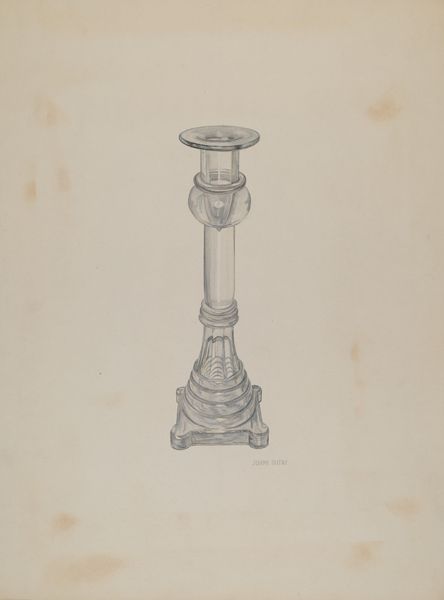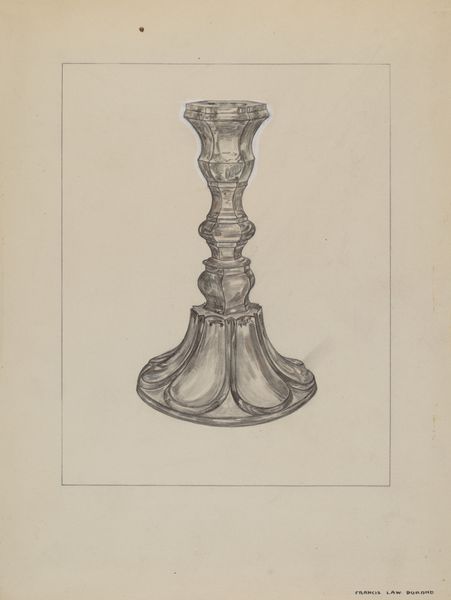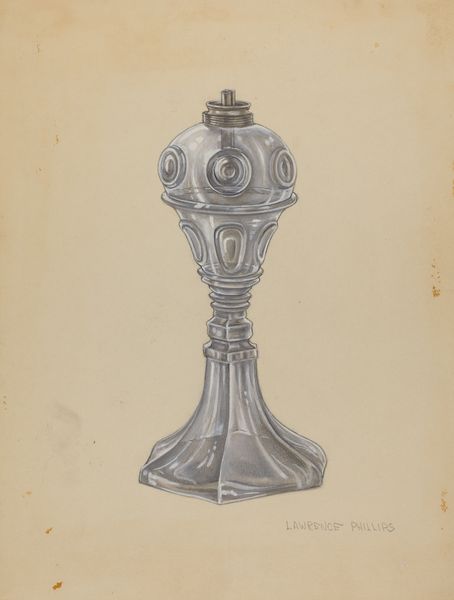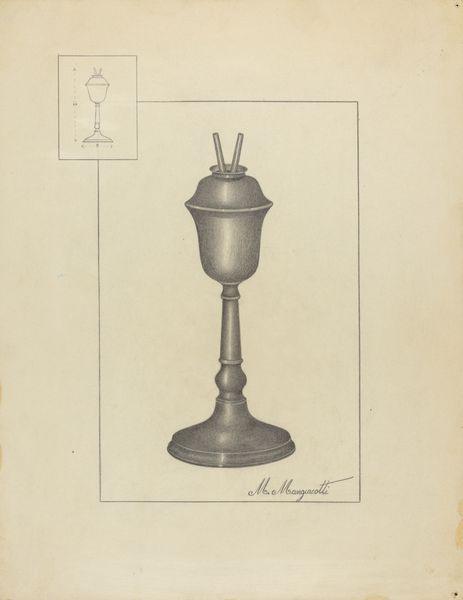
drawing, pencil
#
pencil drawn
#
drawing
#
pencil drawing
#
pencil
#
academic-art
Dimensions: overall: 30.2 x 23.1 cm (11 7/8 x 9 1/8 in.)
Copyright: National Gallery of Art: CC0 1.0
Editor: Here we have "Lamp," a 1936 pencil drawing by Charles Charm. It's a very straightforward depiction, quite precise. I wonder, how do you interpret this work as more than just a simple study? Curator: That's a good question. Drawings like these often served multiple purposes. They documented objects, certainly, but also participated in a visual culture influenced by social changes in the interwar period. Editor: Could you elaborate on that social influence? Curator: Consider the 1930s. Mass production was becoming more widespread. Drawings like this, even of mundane objects like a lamp, reflected a focus on functional design and precision, which were highly valued. Also, look at the style: it resembles academic art. What might have been the artist's intention by using this traditional approach in 1936? Editor: Maybe to elevate a functional object to the realm of art? Or perhaps it's a commentary on the changing role of craft in an industrial age. It does raise interesting questions about art's purpose during a transformative era. Curator: Precisely! And that intersection between the object's function and its representation, its documentation, says quite a lot about the cultural moment. We should never underestimate a drawing, especially when it features an ordinary subject like a lamp. Editor: I hadn’t thought about it that way. I see it now as less of a simple drawing and more of a cultural artifact in itself, shaped by the socio-economic changes of the time. Curator: Exactly. Every artwork has embedded within it echoes of its time. Looking for those resonances can enrich our understanding of art and culture in equal measure.
Comments
No comments
Be the first to comment and join the conversation on the ultimate creative platform.
